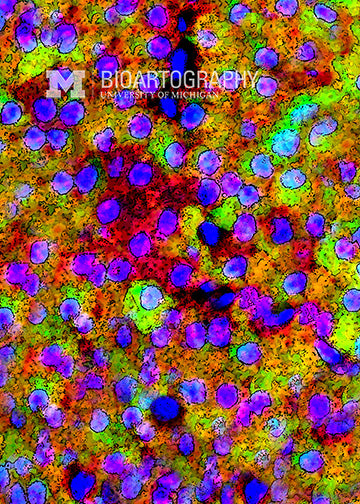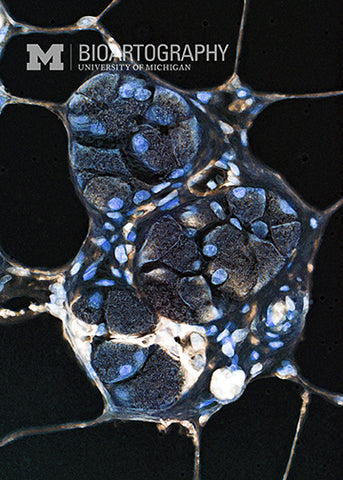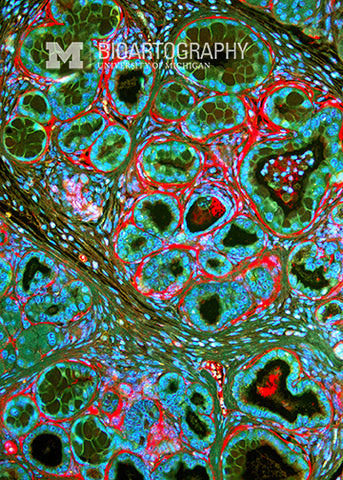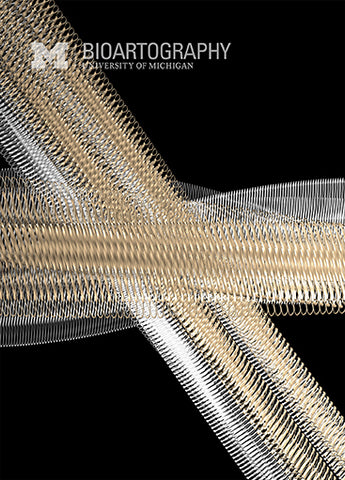

This is a picture of the pancreatic Islet of Langerhans. The nuclei of the islet cells are marked in blue by a dye that stains DNA. The islet is the region of the pancreas that contains endocrine or hormone-producing cells: principally, glucagon (green) and insulin (red). There are about a million such islets in a healthy human; they are critically important in the regulation of blood glucose levels. In type 1 diabetes, the insulin-secreting cells are destroyed by the body in an auto-immune process. Islet cell transplantation is being used clinically as a way to restore these cells. Though this picture is a mouse islet, human islets are very similar in structure and function; thus, the mouse is an important model system for the study of islet disease in the human.



